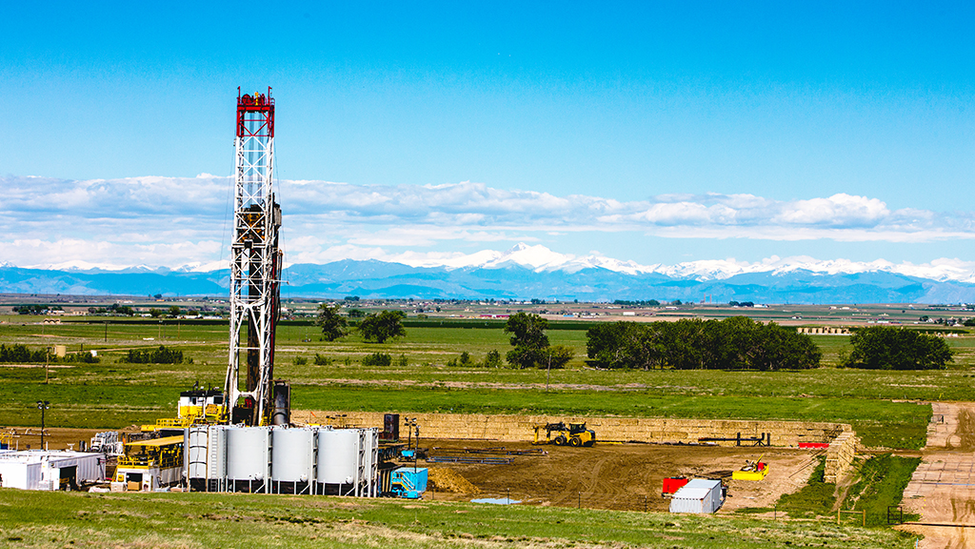5 Strategies for Hiring and Retaining Workers in the Oil and Gas Industry


Despite continued demand for oil and gas across the globe, the industry is struggling with a shrinking labor force and looking for fresh strategies to hire new talent. To continue production and innovate for the future, oil and gas companies need to develop new and effective recruiting and retention strategies that can keep them competitive now and in the future.
The Shrinking Oil and Gas Workforce
According to the U.S. Bureau of Labor Statistics, there were 118,000 workers in the oil and gas industry as of June 2023,1 a steady decline from the 193,000 workers 10 years ago, in June 2013.2 A combination of factors may have led to this change: Layoffs began in 2016 as oil prices dropped,3 and COVID-19-related downturns in the economy in 2020 led to additional lost jobs and likely pushed a large number of baby boomers into premature retirement.4
The industry is left with many openings that are hard to fill. What happens next may depend on how oil and gas companies can best convince new talent to fill the nearly 1.9 million direct job opportunities needed globally in the industry by 2035.5
Hiring Challenges and Strategies to Find New Talent
1. Recognize the Concerns of New Generations
The millennial generation is expected to comprise 41% of the oil and gas industry’s labor force by 2025,6 with Generation Z coming along to fill 30% of the American workforce in all industries by 2030.7 Coming of age in a world cognizant of renewable energy, these generations may be motivated by a number of factors beyond financial gain and may have concerns that could hold them back from exploring oil and gas jobs.8
Increasingly, oil and gas companies are responding by focusing on reducing operational emissions. Companies can recognize sustainability concerns while reminding prospective employees that the oil and gas industry is essential to the daily lives of people all over the globe. Even with the exploration of alternative energy sources, fossil fuels supply 80% of the world’s energy.9 It is imperative that the industry considers branding itself as vital, providing necessary energy sources as the world explores new options.10
2. Promote Culture and Diversity
Taking steps to become more appealing to prospective employees may mean examining what drives new talent. Along with competitive compensation and benefits, today’s worker appreciates attention to work-life balance and expects their workplace to reflect the diversity in their generational group. Gen Z is 52% white, 25% Latino or Hispanic, 14% Black and 6% Asian or Pacific Islander,11 and yet, in the extraction field, diversity lags. Just 23% of oil and gas extraction workers are Black, Asian or Hispanic, and women comprised only 16% of the workforce in 2022.12
3. Recruit Diverse Candidates from a Variety of Networks
As the oil and gas industry experiences changes to improve processes and production, opportunities may arise for new hires of diverse talents and backgrounds. Searching for talent to join your company rather than waiting for people to come to you may be the new standard.
Consider identifying other industries with compatible or transferable skills and be ready to offer opportunities to new talent in the wake of potential layoffs. Participate in industry seminars, workshops, conferences and other networking events to build relationships with peers that can lead to referrals for future hires. Employee referral programs using incentives or bonuses may result in successful hires, as employees often recommend people who align with the company culture and will work well with the team. Consider the use of an oil and gas recruiting agency that can do some of the legwork for you.
4. Reskill and Right Skill Your Current Workforce
When the industry changes, or positions need to be adjusted or opened for new talent, reskilling and upskilling current talent can be a successful option. Eliminating positions that may no longer be relevant might ignore the importance of keeping a workforce that has institutional knowledge and loyalty. Companies can invest in training and development programs to position employees of all levels to work various roles and increase their industry knowledge. Understanding where gaps in skilled positions exist will inform which areas need the most attention.
5. Retain Talent with Appreciation
A step beyond finding and hiring talent is honing it and keeping it. Approximately half of oil and gas workers surveyed are considering moving to the renewables sector, with climate change ranking high on the list of reasons.13 Other concerns include lack of disability insurance, pay discrepancies and opportunity for advancement. Smart oil and gas companies will take these concerns seriously and take steps to address them, including:
- Offering benefits that employees in extraction industries need, such as health insurance, disability, sick time, health and wellness programs, and family leave.
- Making employee recognition and rewards a consistent part of company culture.
- Embracing work-life balance initiatives like flexible scheduling or remote options.
- Sharing transparent communication about the industry and climate concerns.
- Developing a pipeline of advancement for successful workers interested in moving up into management and corporate positions.
To address the continuing labor shortage in the oil and gas industry, companies can look to implement creative recruiting strategies, policies and programs that retain employees, promote work-life balance and promote career growth.
Partner with an Insurance Company that Understands Your Oil and Gas Industry Needs
From operators and drillers to service contractors and manufacturers of specialized parts and products, every stage of the oil and gas production process presents unique risks. Travelers has specialized expertise, products and services to help oil and gas companies protect their employees and business property and support them in their sustainability journeys.
Sources
1,3 https://www.eia.gov/todayinenergy/detail.php?id=12451
2 https://www.bls.gov/iag/tgs/iag211.htm
4,8 GETI Report 2023
5,6 America Petroleum Institute, Millennials in the Oil & Natural Gas and Petrochemical Industries
7 Gen Z In The Workplace: How Should Companies Adapt?
9 https://www.eesi.org/topics/fossil-fuels/description
10 https://parivedasolutions.com/news/three-ways-the-oil-and-gas-industry-can-compete-for-talent/
11 https://www.pewresearch.org/social-trends/2020/05/14/on-the-cusp-of-adulthood-and-facing-an-uncertain-future-what-we-know-about-gen-z-so-far-2/
12 https://www.bls.gov/cps/cpsaat18.pdf

Travelers Innovation Network for Energy
Take advantage of access to and discounts* from this specially curated collection of vendors and resources, available to Travelers customers.



